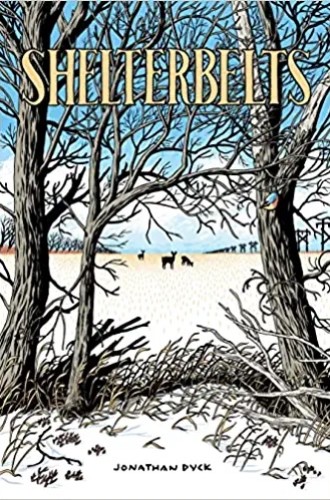Jonathan Dyck’s queer Mennonite graphic novel
Shelterbelts is a quiet ode to rural life that honors what is good and confronts what is not.
Discussing religion and humanity in an interview with Conundrum magazine, author and illustrator Jonathan Dyck describes faith as a practice and an orientation. While recognizing that it can be prescriptive and personal for some, Dyck approaches faith not as a possession to be lost or found but rather as something collectively lived. Faith can occur not only through religious devotion but “as a response to one’s circumstances . . . in one’s political commitments, in the refusal to accept things as they are and remain open to alternative possibilities.”
With this expansive spirit, Dyck’s debut long-form graphic novel, Shelterbelts, illuminates the faithful practices and queries of a rural Mennonite community in Manitoba as its members grapple with their histories, their identities, and their varied responses to shifts within and around them. Churches shrink and swell; queer young people find their way; farmers, landowners, and land protectors grapple with past and future; teachers and activists confront the encroaching presence of military recruits and oil lords. Dyck’s compelling story lines and captivating graphics reflect the sincerity, curiosity, and intimacy he brings to his work, clearly respecting faith as a guiding orientation even as he critiques and plays with it. Shelterbelts invites readers of many perspectives to do the same.
It would not be inaccurate to call Shelterbelts a queer Mennonite graphic novel, perhaps the first of quite this kind. Queerness is a theme woven throughout, most obviously as an identity of several characters and topic of church conversation and conflict. But I suggest that this book functions to queer—to disrupt or unsettle—presumed categories in several additional ways.





